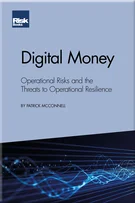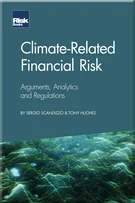Climate-related loss given default
Acknowledgements
Foreword
Preface
Introduction
Regulator motivation and aims
Scenarios
Two underappreciated climate risk topics: Exposure at default and asset valuation
Assessing the available evidence related to consumer credit risk
The modelling of climate-related financial risk
Credit risk – Probabilities of default models
Climate-related loss given default
Market risk
Liquidity risk
Operational risk
The (limited) power of disclosures
Financial regulators’ climate mandate should be formalised
Where to for climate risk regulation?
Conclusions: Using finance to drive climate solutions
References
INTRODUCTION
Loss given default (LGD) is defined as a percentage of the exposure at default (EAD) (Basel Committee on Banking Supervision, 2006). According to Peter (2011), economic loss may be characterised as the change in the value of a facility resulting from a default and, consequently, the computation of LGD can be expressed as:
LGDj(tDF)=EADj(tDF)−NPV(Recj(t),t≥tDF)+NPV(Costsj,t≥tDF)EADj(tDF)
Here, NPV refers to net present value, tDF is the time of default and Recj(t) and Costsj(t) represent recoveries and costs observed at time t. This formula can be directly computed from complete data including information on all incurred losses. However, in cases of incomplete information, especially when the facility has not defaulted or is undergoing workout, LGD becomes a random variable and necessitates estimation, as highlighted by Bennet, Catarineu and Moral (2005).
As for other risk parameters, climate risk can affect LGD in two ways: through physical risk, which is the direct damage caused by extreme weather events or gradual changes in climate, and through transition risk, which is the indirect impact of policy, that is, legal, technological or market
Copyright Infopro Digital Limited. All rights reserved.
As outlined in our terms and conditions, https://www.infopro-digital.com/terms-and-conditions/subscriptions/ (point 2.4), printing is limited to a single copy.
If you would like to purchase additional rights please email info@risk.net
Copyright Infopro Digital Limited. All rights reserved.
You may share this content using our article tools. As outlined in our terms and conditions, https://www.infopro-digital.com/terms-and-conditions/subscriptions/ (clause 2.4), an Authorised User may only make one copy of the materials for their own personal use. You must also comply with the restrictions in clause 2.5.
If you would like to purchase additional rights please email info@risk.net










